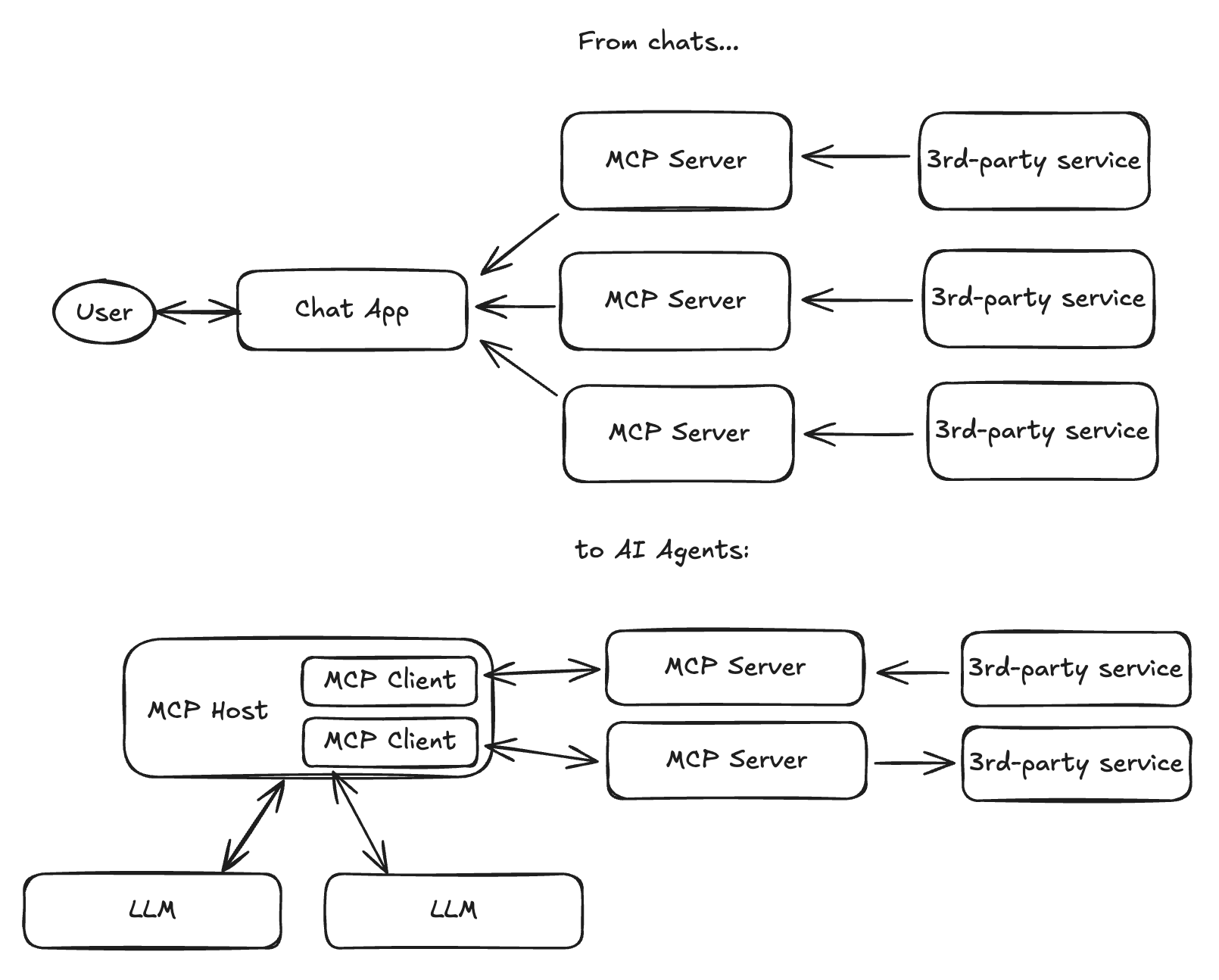MCP goes beyond context injection
Model Context Protocol attracts a lot of interest in the software development community. Naturally, an easy way to understand MCP is to start with MCP server implementations, by using or implementing them. But, focusing on this alone can make it appear like a context pipe for a chat. MCP, however, does much more. With its core concepts - hosts, servers and clients - MCP arguably provides a good abstraction for building AI Agents.

Before talking about AI agents, though, let’s have a closer look at some characteristics of the core MCP concepts: †
- Indeed, an MCP host - a program that uses LLM - can use any number of MCP servers. This is the obvious part: connecting Notion and Google Drive to Claude, or letting Cursor access a Postgres DB and GitHub tickets.
- An MCP host is also not limited to a single LLM - it can use any number of LLMs, each for its own purpose.
- MCP servers can expose Resources and Tools, providing information but also rendering things actionable. Ultimately, an MCP host controls the use of LLM and how to expose the tools to it.
- And finally, MCP does not dictate what a client program does, beyond the fact that it can somehow use the MCP servers. Most crucially, a client doesn’t have to be a chat! Most of the time we think of a chat because it is a popular way we interact with LLM, but generally speaking a client need not expose any textual interface at all. Typically, a client would implement a set of domain-specific features, beyond answering questions or generating text. Well, as any useful software.
For example, imagine an AI Agent that scans your Todoist lists, identifies items that need a meeting planned with other people, exchanges with your peers over Slack or e-mail to agree on a suitable time slot, and books it in your agendas. ††

What is MCP then? As in “protocol”, it really sits right in the middle of everything. Whereas some platforms can expose their already existing services via MCP server implementations, new software leveraging the LLMs can use MCP as a glue between the three.
In some way Model Context Protocol is a misnomer, its name doesn’t do it justice. Although technically correct, it enables the implementations that go beyond piping more context to chat interfaces. MCP is what enables the AI Agent architecture.
Personally, I have found that writing an MCP server is the most intuitive way to learn more about it. Creating new client applications on the other hand is about inventing new use cases and new services, which is naturally harder, but arguably more exciting. I am keen to see more of these in the future!
–
Footnotes:
-
† I use the word “client” in its most generic sense, as in “client-server architecture”. Technically, in MCP, it is a “host”, but since Anthropic also confuses the two, I allow myself a more traditional use of the word.
-
†† It is worth noting that there exist important security concerns due to which it is not yet possible to give such an agent full autonomy.